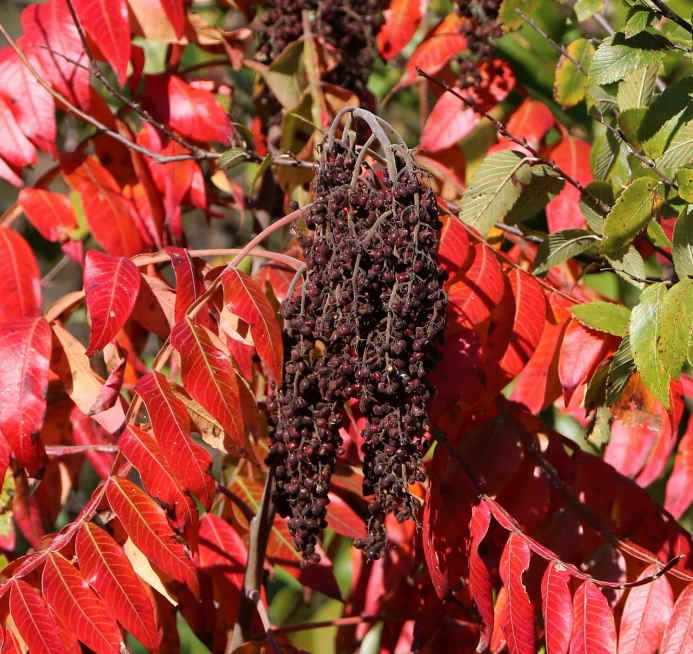Grow Your Own Lemons

Before diving into the recipe, it's essential to identify winged sumac correctly. Winged sumac is very easy to identify. The most notable feature is the narrow wings that grown on the petiole, between each leaflet. You can see them if you look closely at the picture above. Also, there are no teeth on the leaflets. The leaves are compound leaves similar to a hickory or and ash. Leaflets will number in the high teens, more than hickories or ashes. The leaves are normally green, but will turn red in the fall.
Winged sumac grows best in full sunlight and well-drained soils. So, look for it forest disturbances and other areas such as edges that get more sunlight.
To make your sumac-aid first find the ripe berries. Make sure to avoid any sumac with white berries, as these probably belong to poisonous species. Cut the clusters of berries off the shrub. Leave some to help with propagation. You want this bush/tree around. You might even want to grow some around your home.
The sumac's flavor comes from the sour coating on the berries, so, don't wash with water to clean them. Place the cluster in a container, of water. Best method is to strain when it is ready. If you don't have a method to strain then you will need to clean them first, but that will likely weaken the strength of the sumac-aid as you wash or rub off the contaminants (bugs and debris).
Place the berry clusters in a large bowl or jar. Pour water over the berries, ensuring they are fully submerged. Use about 2 clusters of berries per quart of water, adjusting the amount depending on the desired strength. Let the berries steep in the water for about 2 hours. Do not use hot water and the time soaked is very variable. The longer you soak them the more flavor you will extract. However, the long you soak them the more likely you will also extract some bitterness. Fifteen minutes to 4 hours is a wide window. So don't worry about this too much.
Once the berries have soaked, strain the liquid through a fine mesh strainer or cheesecloth into another bowl or jar. This will remove the berries and any small debris or fuzz. Color of the final product sumac-aid is pink to maybe reddish in color.
Taste the sumac-aid. It should have a tart, lemony flavor. If desired, add honey, sugar, or another sweetener to balance the tartness.
The sumac-aid should be used quickly even when stored in a refrigerator. Good news is you can save the dried berry clusters for later use. Store in a cool, dark place for later use. Dried berries can be stored and used to make sumac-aid throughout the year.
Sumac-aid is a delicious, sustainable option that requires minimal ingredients and effort. So, grab some winged sumac, and give this ancient beverage a try!
